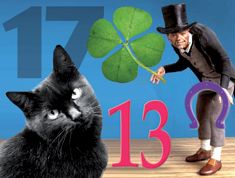The man assists the woman in making several turns followed by a leap, causing her skirt to rise to scandalous heights.
Despite its popularity, or perhaps causing it, many deemed it indecent and shameful; the police were trained to look down upon this dance due to its risqué nature.
What kind of dance did Florentine nobles perform at their lavish festivities? And what were the peasant farmers doing with their Saturday night? It is hard to determine exactly, but traditional dance historians can give us a clue as they attempt to trace migratory patterns of popular dances. Many that ended up in Italy were imported, but the few that were born here stand out. Whether religious, medicinal, or social in origin, these dances definitely have a touch of Italian flair.
Bacchanals are often associated with boisterous and delightfully hedonistic youth, but they were actually religious dances. Inspired by the Roman god of wine, Bacchus, the festival of Bacchanalia included different styles of dance, wherein followers mirrored the movements of the satyrs trailing behind the deity. Scholars are unsure as to the creators of each bacchanal, but there are definite distinctions between each dance, named for their possible inventors. The majestic movements, for example, of the more serious Emmelian dance, were accompanied by voice and lyre. The Cordacian was more lively and spirited and has been compared to dances which use the tambourine, where percussions inspire less inhibited motions. In between these extremes lies the Cyninnic, a combination of bold strength and tenderness. In all cases, these communal dances were generously accompanied by plenty of wine.
As with many popular dances, the Tarantella developed within the peasant class. Also called the St. Vitus Dance, the ‘Danse de St. Guy’ in France, and ‘Veith’ in Germany, this dance is primarily named for the tarantula spider, the presumed cause of its movement. Its true date of origin is difficult to pinpoint, but several myths surround the source of the dance. If a certain spider bit you (which kind is debated), the only cure was to dance out the venom. Another possibility was that the poison made you dance uncontrollably. The Tarantella also could have originated in the town of Toranto (or Tarentum), where the women working in the fields were bitten and had to dance in hopes of sweating out the toxin. The Church attributed the Tarantella to a priest who, annoyed with a group of singing and frolicking young people, prayed that they would dance for an entire year. Despite the Church’s implied disapproval of the dance, its popularity continued to increase, feverishly crossing Italian borders and adapting to neighboring cultures. With mandolins, tambourines, and any improvisational percussion instruments frantically encouraging the dancers, the precise movement became secondary to the emotion conveyed. It progressed from a mostly female group dance to a couple’s dance, once a new sensual teasing element was added. The graceful, vivacious woman and her agile, elegant partner constantly play, uniting and fleeing in turn. Combining magnetic attraction and coquettish courting, the dance all but ignored specific steps.
The Volta also sprang from the lower class, but was later transformed into a more refined dance for the upper class, eventually traveling to the Parisian court in 1556 and Versailles in 1581 through Caterina De’ Medici. As a Renaissance precursor to the Waltz, this dance’s steps are more defined than the Tarantella’s. The dance is done in 3/4 time with five counts: two single steps and a double step with a hop comprise a measure. The man assists the woman in making several turns followed by a leap, causing her skirt to rise to scandalous heights. Despite its popularity, or perhaps causing it, many deemed it indecent and shameful; the police were trained to look down upon this dance due to its risqué nature.
One of the few dances that originated from courtly life was the Saltarello. It was very popular in Rome and Venice, although the basic steps derived from the Galliarde of Spain. Named for the skipping step or little leap at the beginning of each measure—Saltarello comes from saltare, ‘to leap’— it consisted of two steps, three small changing steps, and the leap. As the dance rose to popularity in the elite realm, the jump was reserved for the better dancers. With the melody of the guitar, tambourine, and mandolin, a single couple would begin the pattern of wooing-resisting-surrendering that characterized the dance. Soon after, the audience would join in, and the dance floor would swell with enthusiasm and delight.
Unfortunately, most Italian traditional dances have either been lost or infused into other forms. Due to a lack of reliable scholarship on the subject, little is known about the history and tradition of folk dance, making reprisal near impossible (especially considering that many dances were largely improvisational).
But if you look closely at modern ballroom dance, you may spot a step or two from the Tarantula.





